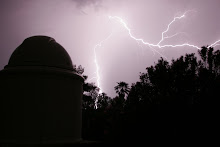
Tonight's a cloudy one, so no sitting out in the cool night air for me. That's probably a good thing as sleep deprivation has a way of catching up with people. In fact I think I recall learning in one of my college elective courses about U.S. military tests in which researchers studied the effects of sleep deprivation, and the results were none too pleasant. They should have included astronomers in their study - I suspect we have some sort of extra ability to stay awake for extended periods.
So anyway it has been a fun run for the past 5 nights, at least in terms of my backyard astronomy sessions. "Normal" life still goes on during the day, and with my wife's surgery and recovery the daytimes maybe haven't been so great. But this is an astronomy blog, so we won't dwell on that. Other than to make an analogy, you might say I'm feeling like a Type K or M star these days as my fuel source seems to be dwindling. I suppose humans are sort of like variable stars, we go through phases of high and low energy output. (Now you can tell I must be tired to write wierd stuff like that!)
In the past 5 nights I've taken quite a bit of imaging data through my refractor. I also spent some time just reclining and watching an outstanding meteor display from the Orionids. Additionally, I worked on setting up and calibrating the 14" in the dome. All told it was a busy, somewhat productive time, and most importantly it was a relaxing escape for me.
The images above, which are only portions of NGC7000 and IC1848, were taken during some "filler" times, for example when an object is crossing the meridian I need to temporarily stop imaging and slew away from the object in order to keep the mount working properly. During these times I occasionally grab a few shots of something other than my main target (as they say, a photon is a terrible thing to waste). These are both 3x10 minutes Hydrogen-alpha filtered images and I forgot to refocus for the NGC7000 (North American Nebula) shot. Neither image contains the whole nebula - these are big objects. But it's always fun to see what the camera can pick up. This kind of imaging is more like visual observing, the objective isn't necessarily to produce an exceptional image but instead just to explore and let your mind ponder on what an immense and beautiful universe we live in.

No comments:
Post a Comment